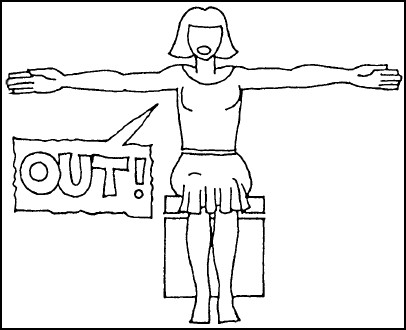Manual Officiating In Badminton Hand Signals Pictures


Clear communication is a main component in refereeing a game. You communicate your calls through two methods: Hand signals and whistling. Eztwain Pro 3 Crack. This guide will not only describe how to perform each hand signal, but it will also explain why and when each is used during a game.
Rules to Play By Referees use hand signals to communicate to the other referee on the field, the players, and the coaches. As a referee, you can maintain a fast-flowing game by keeping your hand signals consistent and accurate. Below are some of the best practices to use when calling a game. • Primary signals indicate what penalty was called. A stroke, penalty corner, free hit, bully, or long corner would be considered primary calls. • Secondary signals indicate why a penalty was called.
For example, you would show that you called a free hit because of a high sick, stick interference, foot foul, lifted ball, etc. When making calls, indicate the primary signal first and then the secondary signal. Penalty Calls The penalty is the initial call you would make during a game. Download Tutorial Autocad 2014 Bahasa Indonesia To English Translation there. Listed below are the hand signals for the different penalty calls made during a game, and suggestions on when to employ each one.
The course has been designed to be conducted over seven (7) sessions. Information sheets are provided to give the course facilitator the knowledge. Signals: Field umpire. UNIT 5 BOUNDARY UMPIRING. Information section. Signals: Boundary umpires. UNIT 6 GOAL UMPIRING. In 1981 the International Table Tennis Federation (ITTF) introduced hand signals for use by international umpires. So, in addition to controlling the match with verbal communication, umpires can also use approved hand signals to indicate certain decisions. This is especially useful where the noise level makes it difficult for.
Advantage An is called when the team that was fouled gains a benefit from the foul. Generally, this is demonstrated by the ability to maintain possession of the ball and the ability to make a play. Once you see the foul, signal to indicate advantage, but delay calling the foul to determine whether the other team actually gained the advantage. To indicate an advantage, point your arm high up in the air towards the direction the fouled team is attacking. A Free Hit A is called for all minor penalties made in the neutral zone.
To indicate a free hit, raise one arm horizontally towards the direction of the free hit. A Free Hit Moved up 10 Additional Yards A free hit is progressed up the field an additional 10 yards if the team that committed the foul wastes time or shows unsportsmanlike conduct. To indicate that a free hit is to be moved up 10 more yards, place one arm in the air and clench your fist. Penalty Corner A is called for any minor penalties — foot fouls, lifted balls, obstruction — inside the 25-yard zone. To indicate a penalty corner, point both hands and arms horizontally towards the goal.
Penalty Stroke A is called for any major penalty made inside the 25-yard zone. These are most commonly called against the defending team for preventing a sure goal with an illegal move, such as a foot foul or body contact, or for purposefully trying to injure another player. To indicate a penalty stroke, point one arm at the penalty stroke mark and the other arm up towards the sky. Drew Curtis Businessman & CEO of Fark.com Fouls Fouls are infractions or illegal moves committed by a player. You will call the fouls to indicate why you called a penalty. Dangerous Play Dangerous play is called for anything you may consider dangerous.
This can include a player using a high stick, attacking from behind, hacking, lifted balls, etc. To indicate dangerous play, place one arm diagonally across your chest.
Obstruction Obstruction is called when one player uses her body to prevent another player from getting to the ball. To indicate an obstruction call, cross both arms in front of your chest. Third Party Obstruction Third party obstruction is called when a player runs between her teammate (who has possession of the ball) and an opponent trying to get the ball, essentially block the opponent’s path. To indicate third party obstruction, alternate opening and closing your forearms that are crossed in front of your chest.
Stick Obstruction Stick obstruction is called when a player uses her stick to block another player from getting to the ball. To indicate stick obstruction, extend one arm down at about 45 degrees towards the ground. Place your other hand on top of your forearm. Foot Foul A foot foul, or kick, is called anytime a player touches the ball with her feet (intentionally or unintentionally). This call is sometimes overlooked if the other team gains possession of the ball (this would be an advantage). To indicate a foot foul, raise one leg and tap it on the foot with your hand.